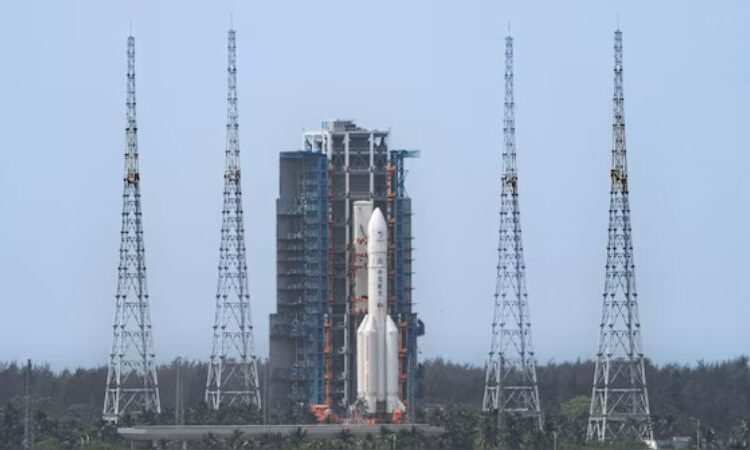
Quicksplained: Pakistan’s first moon mission and its China connection
Staff Writers: Firstpost
May 03, 2024
Pakistan is sending its moon mission (ICUBE-Q) on board China’s Chang’e6 on 3 May. ICUBE-Q has been designed and developed by Islamabad-based Institute of Space Technology in collaboration with China’s Shanghai University and Pakistan’s national space agency SUPARCO
The Institute of Space Technology (IST) in Islamabad announced that Pakistan’s first lunar mission, iCube-Q, is scheduled for launch on 3 May at 12:50 pm (Pakistan Standard Time) aboard China’s Chang’e 6 lunar probe from Hainan, China. This collaborative effort involves Pakistan’s national space agency Suparco, along with China’s Shanghai University SJTU.
The lunar mission headlined by China is set to land on the far side of the moon, where it will gather surface samples to be brought back to Earth for further research.
“Pakistan Space & Upper Atmosphere Research Commission, #SUPARCO’s logo is seen on China’s most powerful rocket #LongMarch5! Together with China’s #ChangE6 lunar probe and payloads from France and #ESA, Pakistan’s CubeSat is ready to go to the moon in just a few days!” the Chinese embassy in Pakistan said in a post on X.
What is so unique about this particular mission?
- One notable aspect of this mission is the inclusion of a CubeSat satellite, iCube-Q, developed by IST. CubeSats are miniature satellites known for their small size and standardised design. These satellites play a crucial role in facilitating scientific research, technology development, and educational initiatives in space exploration.
- Despite their compact size, CubeSats offer valuable opportunities for universities, research institutions, and commercial entities to participate in space missions and gather essential data for scientific advancement, reported Dawn.
- The ICUBE-Q orbiter carries two optical cameras to image the lunar surface.
- In 2022, the China National Space Administration (CNSA) extended a distinctive opportunity to member states via the Asia Pacific Space Cooperation Organization (APSCO) to include a student-built payload on the Chang’e 6 mission bound for the moon. Pakistan’s ICUBE-Q was chosen.
- China’s Chang’e 6 mission marks the next step in its meticulously planned lunar exploration program. Scheduled to launch from the Wenchang Space Launch Site on southern Hainan Island, this mission aims to achieve several “firsts” in lunar exploration.
- Notably, it will be only the second mission to land on the lunar far side, following the success of Chang’e 4 in 2019.
- One of the primary objectives of the Chang’e 6 mission is to collect samples from the moon’s far side, specifically targeting the South Pole-Aitken basin, the oldest lunar impact crater. This ambitious endeavour will provide invaluable insights into the composition and age of the lunar far side, contributing to our understanding of the early history of the Solar System.
- The Chang’e 6 mission exemplifies international collaboration in space exploration. With contributions from France, Italy, Pakistan, Sweden, and the European Space Agency (ESA), this endeavour transcends national boundaries in pursuit of scientific discovery.
- Despite geopolitical tensions, scientists emphasise the universal principles underlying scientific collaboration and the importance of sharing knowledge for the benefit of humanity.
- Any specimens retrieved will be shared with the international community for in-depth analysis, just like the Chang’e 5 samples and data from China’s other space science missions – including its recent high-resolution Moon atlas.
